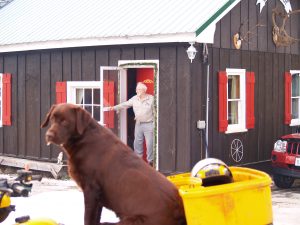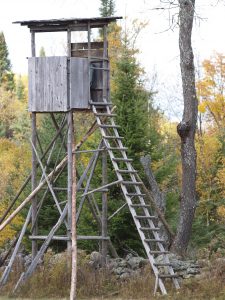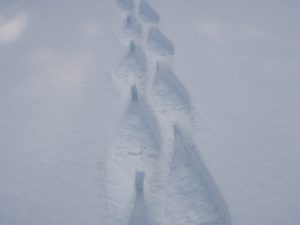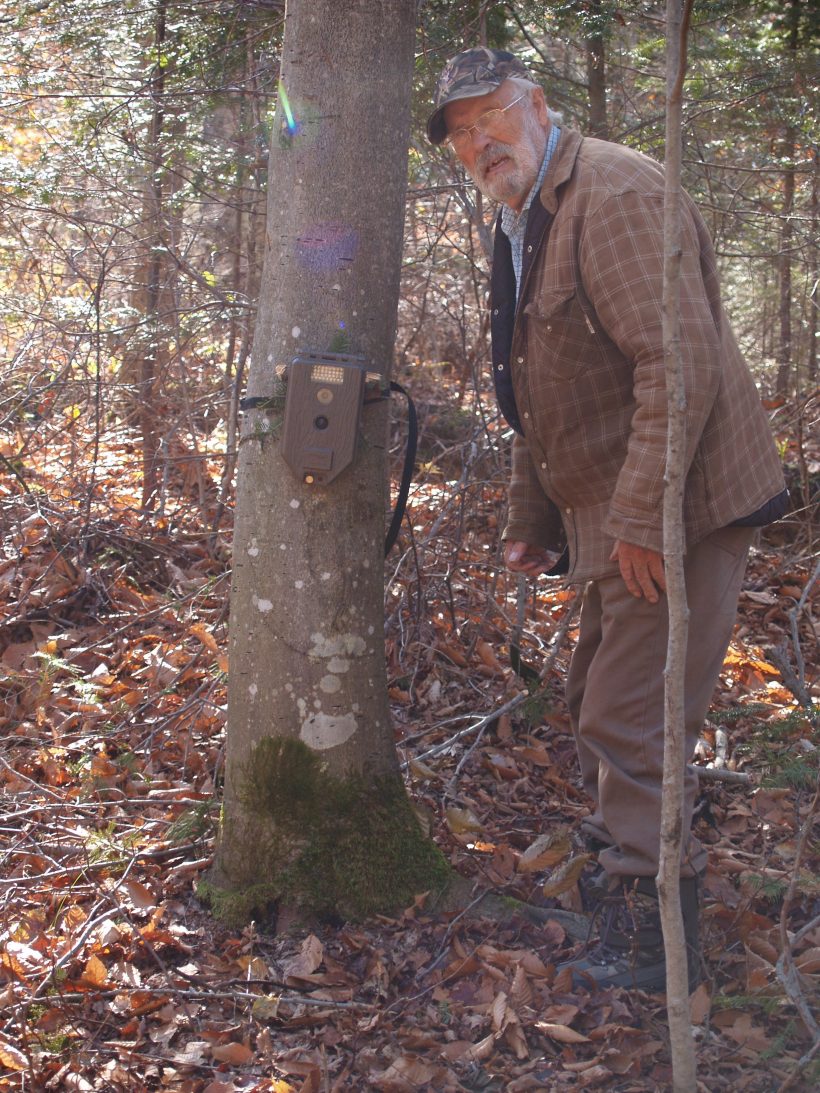And God said, Let us make man in our image, after our likeness: and let them have dominion over the fish of the sea, and over the fowl of the air, and over the cattle, and over all the earth, and over every creeping thing that creepeth upon the earth. Genesis 1:26
The winter of 2004-2005 appears to be the pivotal point for Joe Neuhold and his beloved elk. The snows came early and then the freezing rain. Rising at 6 a.m., the usual time when he would go to feed the elk and the deer Joe discovered the thermometer was reading –40degrees Celsius. The trees were covered in hoarfrost creating the fairy like world impression with the first light of the rising sun glistening off the ice crystals that is so popular with romantics. But nature had conspired to change Neuhold’s plans. Normally, he would take his snow machine and ride a few kilometres to feed the animals. If he wasn’t there by 8 a.m. then they would come looking for him. Elk may not bear timepieces but they are habitual.

The combination of deep snows and freezing rain had created a crust that could support lesser creatures, such as deer, but not the heavier elk. Later, while travelling around his property he could see where the elk had tried to travel but had broken through the crust and were forced to return to Joe’s. In short they were trapped. Fortunately there is a lot of space near Joe’s, sufficient to accomodate the 39, give or take a few, elk without everyone tripping over each other.
Joe lives in a modest 2-bedroom cabin that at one time was a hunting camp. It measures 40×20 and affords him a very comfortable home. The large open area adjacent to the cabin was once known as Barker’s Mill. It provided many jobs for local workers and people talk of getting the lumber to build their cottages on nearby Weslemkoon Lake which, by the way, apparently means “bank beaver” referring to the beaver that build their lodges in the river and lake banks. The land, some 2000 acres, belongs to a German Industrialist, Klaus Reimold. Neuhold is the overseer managing the timber and studying the wildlife. How is it that Joe Neuhold came to be in this situation?
Born in 1929 at Bruck Mur, in the Province of Steiermark, Austria to Liberat and Maria Neuhold, Joe attended school until grade 5. He’s not sure how that relates to North American schools but he stayed in school until he was 14 which would have approximated grade 7/8 in Canada in his time. His dad was a locomotive engineer.
“We were quarantined a lot from childhood diseases. My brother would be sick and in the hospital and when he would come home I’d catch what he had and we would be quarantined.” It used to be common practice in Toronto, in the 50’s, to do the same. If a child came down with the mumps, measles, chicken pox…then the family was quarantined and only father could leave to work. Today most people haven’t a clue about such things although the SARS (Severe Acute Respiratory Syndrome) outbreak has rekindled an appreciation of the need for such measures.
“ We missed a lot of school due to childhood illness.” And his brother Anton, affectionately known as “Tony”, had to undergo dialysis treatment for 16 years. He did receive a new kidney but “it didn’t succeed.”
As a lad of 12-14 Joe recalls helping in the hunts. “They don’t use dogs; they use boys as drivers instead. For hunting the stag we would walk along talking to ourselves. This would cause the stag to get up and move on. If we came through making loud noises the stags would hide and we would walk by them instead of driving them to the waiting hunters. Rabbits, the European Hare or Jackrabbit as they are commonly known, required a different strategy. To drive them we made lots of noise.”
The land in Austria was privately owned. The government oversaw the management of wildlife. Compare it to Ontario. The Ministry of Natural Resources oversees the entire province. For hunting purposes Ontario is divided into Wildlife Management Units (WMUs). In Austria the government fulfilled a similar role. The WMUs would all be privately owned and administered. The landowner would hire a game overseer. From watchtowers the overseer would study and inventory the animals on that property. The government would decide how many animals could be harvested and the overseer would decide which ones to harvest. Often the oldest would be at the top of the list but other factors such as deformities, irregularities, size…would come into account. For example, kid fawns that would not likely be strong enough to survive the winter would be chosen. The best would be left.

And so, as a hunter, you would be told what particular animal to shoot. Not only must you identify the specie but also you could only shoot the one selected for you. Imagine that here in Ontario the next time you go hunting. Also, you would be given two bullets. The second one was to be used to put the animal down if your first shot failed to be a “clean kill.”
At one point Joe illustrated this by pointing to a spot just below his jawbone and explained that this was the target. Then he pointed to a spot across the clearing, approximately 300 yards away, and said that was how far the kid fawn was that he shot. No running shots here. No wasted shots. If you can’t be certain of the kill you don’t shoot. And often the quality rifles and scopes were provided to ensure such a clean kill. If a hunter should shoot and miss – tough luck. There would be no more chances.
The game overseer wrote down, perhaps sometimes illustrated, descriptions particular to each animal for ease of identification. For example, one of the elk that stays near Joe’s has only one horn. The other broke off in 2004 and it will never regenerate. An overseer would use this feature to describe that particular animal.
Some people get excited when writers use euphemisms such as “harvest” in place of “kill.” Perhaps we can blame that on Shakespeare. The fact is that hunted animals are killed, as are domestic animals such as chickens, sheep and cattle. The fact is that they all produce meat for the household. In Austria, Joe explains, the entire animal is a valuable resource. The hunter pays for the privilege to hunt. The meat is sold, as are the horns, hooves and any other part that can raise some capital. Horns, called sheds, are made into chandeliers, lamps, buttons and sold for profit. And what happens to such profits?
“They are ploughed back into the management of the land. The monies buy feed to help the animals make it through the winter.
A laurel branch of spruce or balsam is placed in the mouth of each animal after it is killed symbolic of its last meal.
Neuhold remembers collecting chestnuts on the way home from school. When he had a packsack full the overseer, or steward, would allow Joe to accompany him into the mountains to feed the stags. Often if they didn’t have skis covered with a seal skin or snowshoes they were forced to wade hip deep through the snows.

